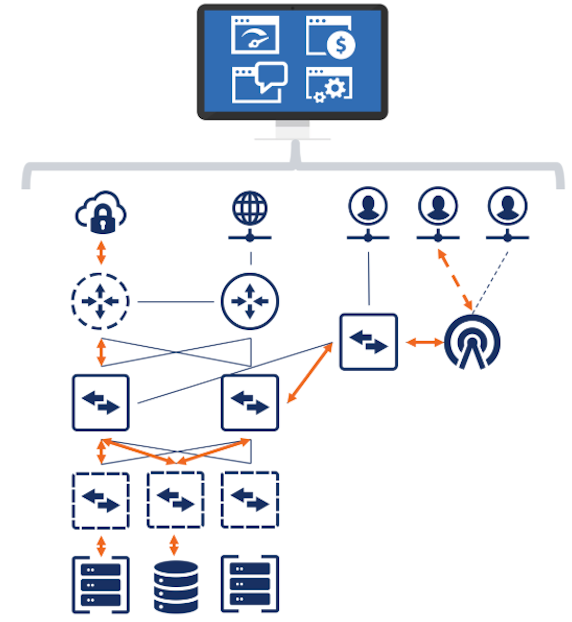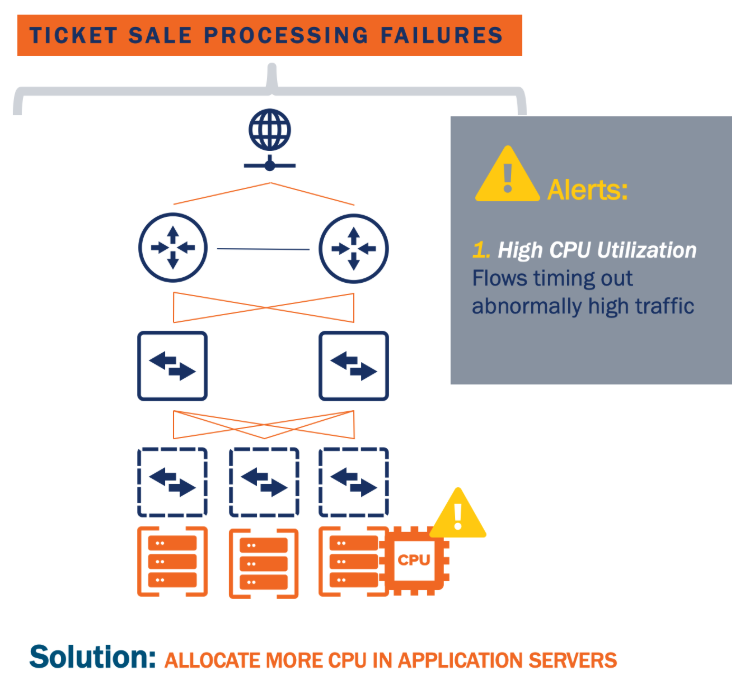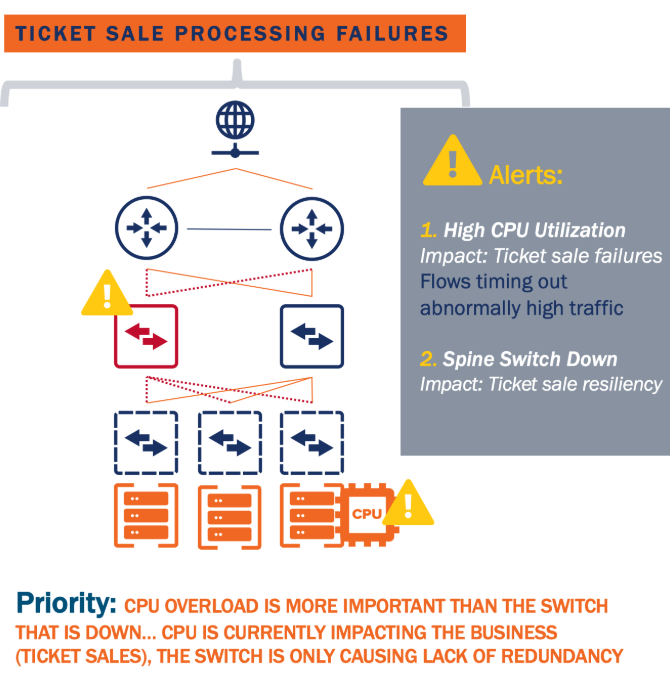
Optanix on AIOps – Part 5: How Optanix AIOps Technology Enables Targeted Use Cases
The Optanix approach to AIOps is to focus on targeted AIOps use cases – outcomes that drive immediate value in the context of IT operations management enabled by AIOps capabilities. These outcomes are some of the many AIOps benefits that the Optanix platform provides:
- Full-stack detection and monitoring
- True root cause analysis with actionable intelligence
- Business service monitoring and prioritization
- Streamlined remediation and management workflows
Now that we have established an understanding of the core components and features of the Optanix Platform, let’s now take an in-depth look at the business and technical benefits of the platform’s AIOps-enabled outcomes.
AIOps Benefit #1: Full-Stack Detection and Monitoring
The Optanix Platform gathers a vast amount of information, including fault, performance flow and application-specific data. This wealth of information is an essential AIOps benefit that helps machine learning and smart analytics systems reduce false alarms and predict problems. The more information collected, the more accurate the service assurance services become.
With the Optanix Platform, this information isn’t just collected, it’s used to tee up machine learning and smart analytics to predict problems and reduce false alarms. It also enables mean-time-to-threshold metrics that allow issues to be addressed before business services are impacted and more wide-reaching problems develop.
As shown in Figure 1, full-stack monitoring delivers end-to-end, top-to-bottom management from infrastructure to business operations in order to better predict and prevent problems. It automatically detects abnormalities and their potential business service impact. Further, by detecting abnormalities from dynamic thresholds and rate of change, the Optanix Platform detects potential and recently occurring issues that other AIOps platforms miss.
Full-stack detection and monitoring delivers:
- Smart analytics with machine learning
- Integrated fault, performance and data
- Hybrid network and systems support
- Application-specific management enhancements

AIOps Benefit #2: True Root Cause Analysis with Actionable Intelligence
This key AIOps benefit is crucial for infrastructure monitoring in today’s global, dynamic service provider environments. It not only accelerates the accuracy and timeliness of IT ops teams’ responsiveness, it also ensures the availability of critical business services. The Optanix Root Cause Analysis (RCA) engine uses multi-perspective analysis to detect problems, determine why they occurred and reduce false alarms. The workflow is optimized through the Optanix Platform’s use of automation to analyze problems more deeply, take corrective actions and retest prior to creating a ticket.
This increases accuracy and efficiency and reduces MTTR by providing actionable intelligence to the operations team – as opposed to adding to the noise.
In the example in Figure 2, ticket sales processing is experiencing failures as flows time out. Traditional products point to flows timing out as the root cause. However, the Optanix Platform’s RCA engine looks further to understand and discover that the CPU utilization is actually causing the flows to time out. Smart analytics sends an alert that, although traffic is not overloading the links, it is abnormally high for these links at this day/time. It also gives a warning of impending service impact, because it saw the link and CPU utilization increasing at an abnormal rate.
True RCA with actionable intelligence resolves problems quickly by understanding why they occurred – or prevents them by understanding why they could occur. This streamlines workflows and reduces MTTR and false alarms to ensure business service issues are resolved quickly, maintaining a smooth business operation.
Optanix’s patented RCA method delivers:
- Actionable intelligence that allows operations teams to quickly address problems
- Multi-perspective analysis to quickly and accurately pinpoint root cause
- Optimized workflows with automations that validate problems before creating tickets

AIOps Benefit #3: Business Service Monitoring and Prioritization
Business service monitoring and prioritization enables IT ops teams to prioritize and address issues quickly based on critical business impact. It does this by mapping IT technology to the business services it supports, then by analyzing impact when problems occur or are predicted. Service performance and availability are analyzed and both real-time and historical statuses are presented in dashboards and reports.
With Optanix’s business-level intelligence, it becomes possible to create SLAs on the performance and availability of business services – not just on the underlying infrastructure. This provides more accurate metrics for the business. If a switch goes down and creates a loss of resiliency but the business is not impacted, the SLA is not affected.
Additional statistics for business services are gained through integration with orchestration platforms. In the example in Figure 3, there are four alerts generated in the ticket sales processing scenario. Two of those alerts root cause: high CPU utilization and switch down.
Optanix’s Business Impact Monitoring (BIM) delivers:
- Real-time and predictive situational awareness of business processes
- Real-time and historical business service status
- Graphical views of service dependency with mapping to help users easily understand business impacts
- Integration with orchestration platforms to obtain additional business service metrics
These capabilities allow service providers and enterprises to prioritize problem remediation based on business impact or the risk of impending problems. They also allow IT operations teams to understand and predict business performance degradations and manage SLAs in the context of business service availability and performance.

AIOps Benefit #4: Streamlined Remediation and Management Workflows
Optanix’s remediation and management workflows are specifically designed and optimized for operations centers in managed service providers (MSPs) and enterprises. They enable operations teams to quickly and securely address prioritized root cause issues to reduce MTTR – which improves customer experience and reduces management costs.
Centralized IT ops personnel can automatically connect to the remote environment through the management layer. This eliminates the need for team members to each have access to credentials at the remote site, increasing security. It also makes it quicker and easier for team members to address problems.
The Optanix Platform’s machine learning and automation can be leveraged across multiple locations and hundreds of operational instances. This streamlines workflows to create operational efficiencies that benefit MSPs and enterprises alike with more effective management.
The Optanix Platform ensures secure, multi-tenant remote access that allows for problems to be addressed across multiple sites remotely. The customer premise is gated and controlled by the customer. Machine learning and automations are ensured across multiple locations.
At the end of the day, business impact is minimized and MTTR is reduced, reducing overall management and back-end costs. IT ops teams can spend less time putting out fires and more time planning strategic initiatives.
In our next (and final) installment, we’ll look at a few real-world AIOps use cases to illustrate the power of AIOps.